Tools For Working With Fields And Tasks
To have a more user-friendly and efficient experience with EOSDA Crop Monitoring, you need to know more about the following interface tools:
- filters
- sorting
- search
- field card
These simple tools will save you a lot of time!
Filters
Filters are customizable search criteria. Your fields or scouting tasks (switch to the Scouting tab) can be easily filtered by crop names and group names. Simply check/uncheck the corresponding checkbox and click APPLY.
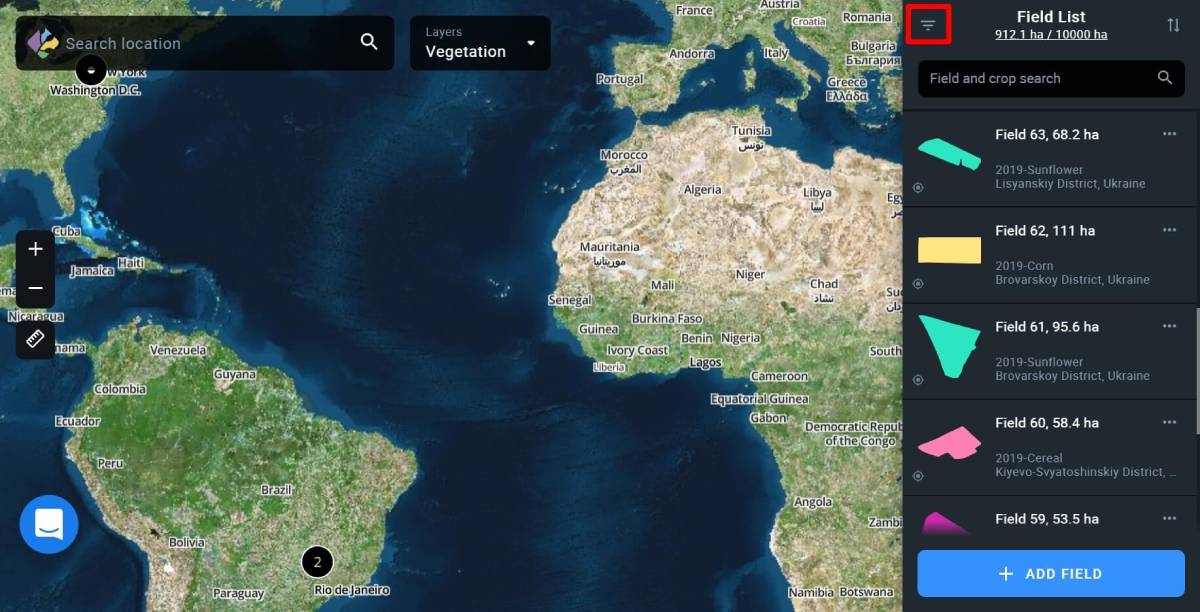
Sorting
In order to sort your fields or scouting tasks (switch to the Scouting tab), use the sorting option on the right. Currently, the following sorting orders are available: Newest, Oldest, by field name: ascending/descending, or field area: Low to High/High to Low.
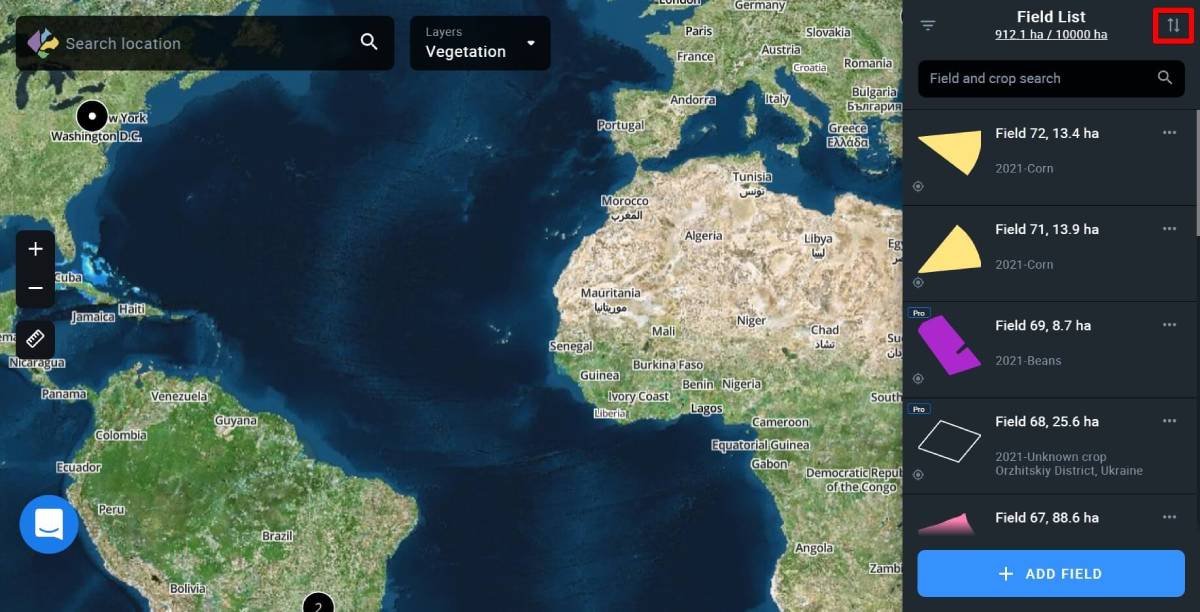
Field Search
Not to waste your time by scrolling through the list of existing fields or tasks (switch to the Scouting tab), you can simply find a specific one using the Field search option by entering the field’s name into it.
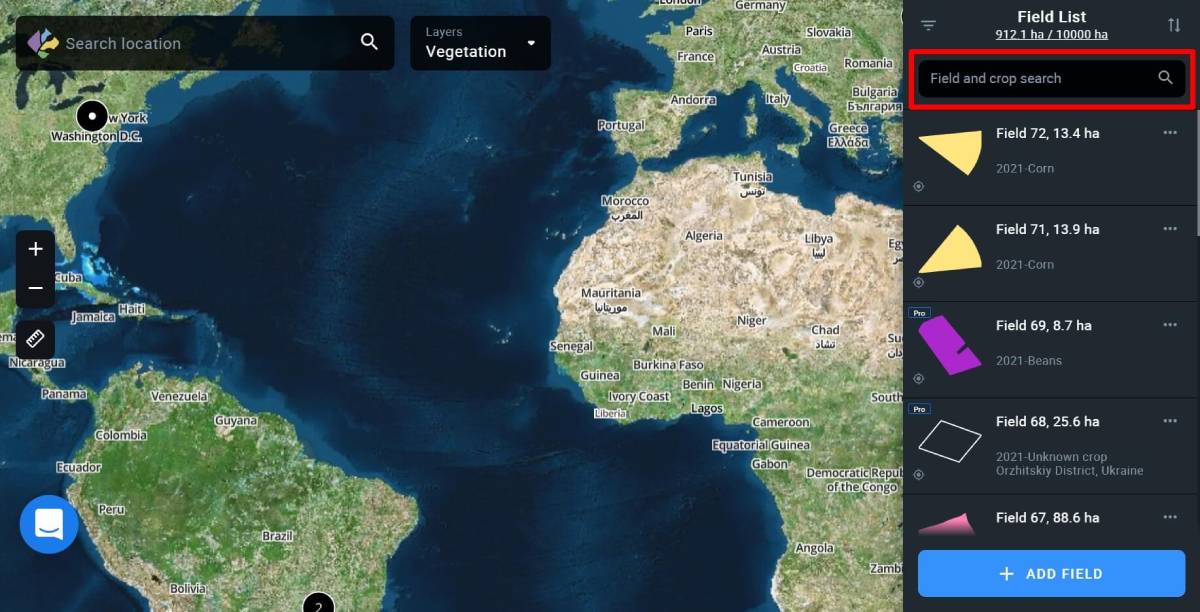
Field Card
Field card is a profile of a particular field, showcasing the most basic data:
– field name
– square (measured in ha)
– group (displayed if the field has been added to a group)
– crop (currently growing crop on this field)
– location (district and country)
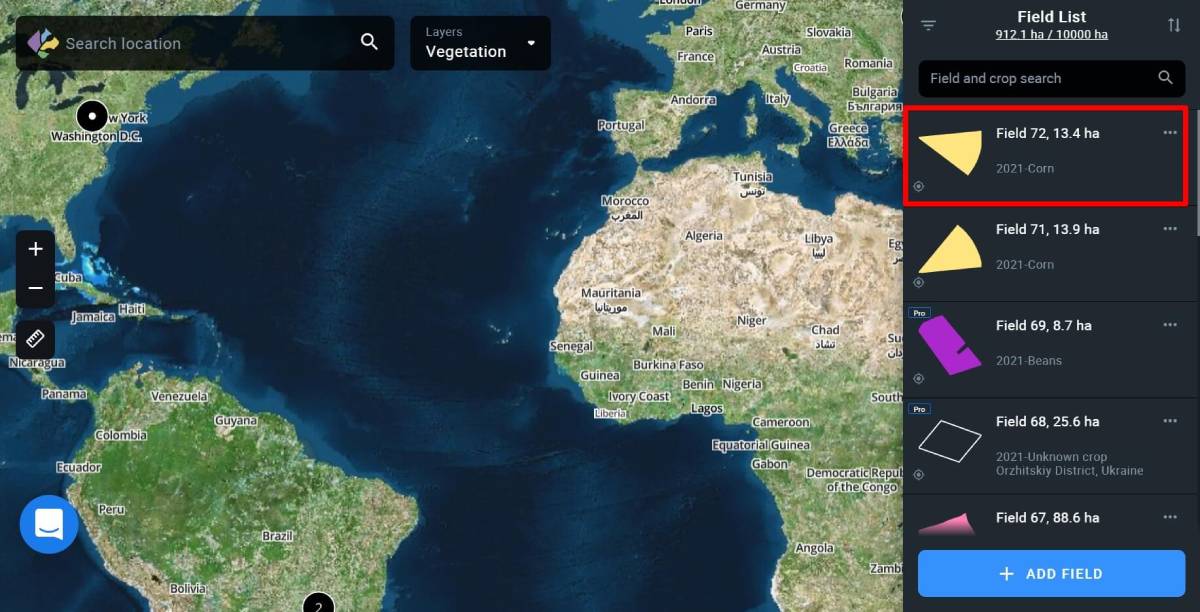
Find field button
The Find field button allows you to instantly zoom in on a field on the map.
By default, you are in the Monitoring tab where you can switch between different layers – My Crops, Vegetation, Water Stress, Vegetation Rating, and Crop Classification.
Pressing the Find field button, you get to view the field in any of these layers.
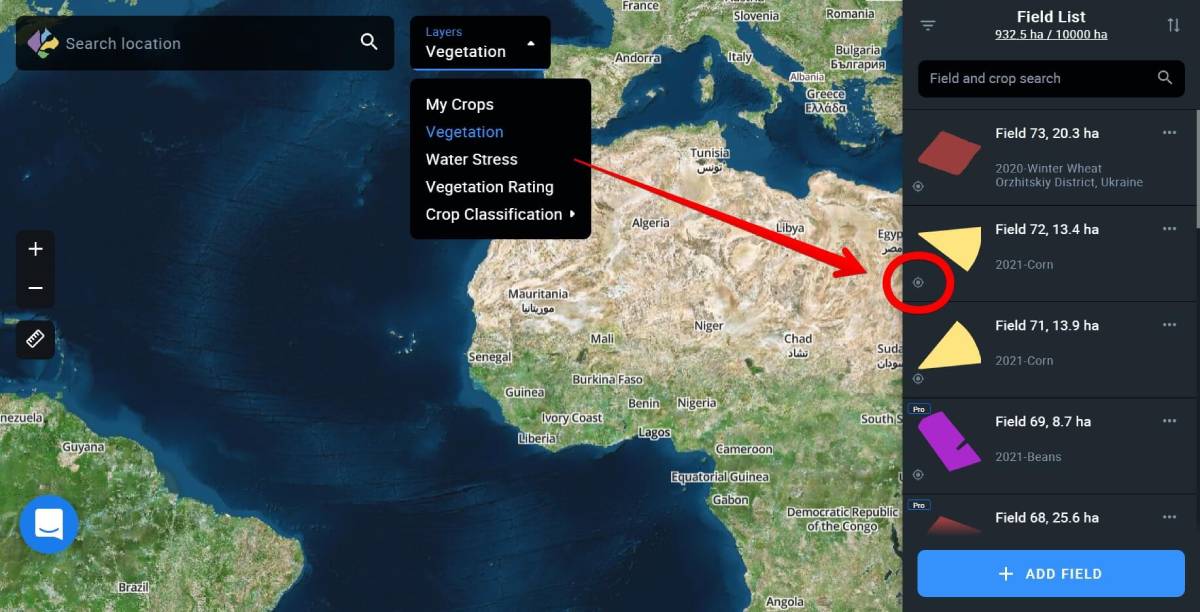
You can view several adjacent fields within your AOI (area of interest) at once, without opening their field cards one by one. This allows you to understand what is happening in your fields within this area at a glance. For example, if you need to view water stress levels of such fields, click on the Find field icon on the field’s card.
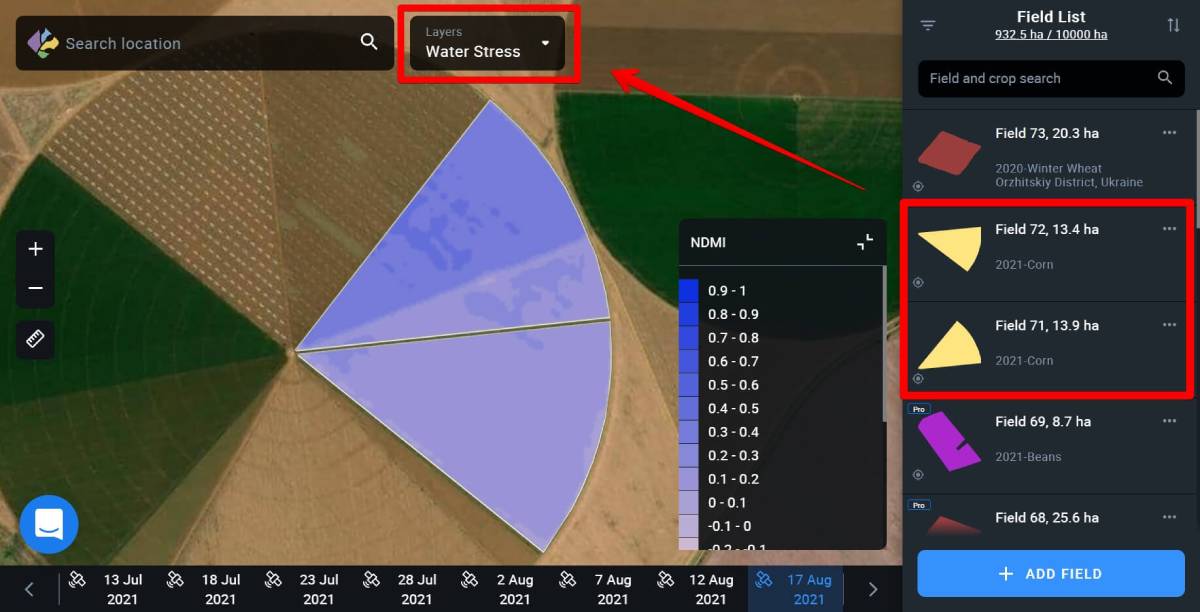
The tool also helps you to quickly get back to the field and zoom in on it on the map.
For example, if you opened the field card, zoomed out, or scrolled away, just press the Find field button to zoom in on the field again.
